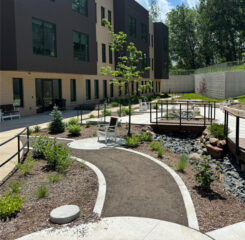Possibilities and Pitfalls of AI Monitoring Technologies
Artificial intelligence can greatly improve caregiving, yet it can also cause resistance among older adults, says a recent article in The Guardian.
Sensors that monitor things such as an older adult’s movement and toileting activities can enable caregivers to be “as efficient as potentially possible,” Majd Alwan, Ph.D., CAST executive director and senior vice president of technology and business strategy at LeadingAge, told The Guardian.
CarePredict, a LeadingAge Associate Business Partner with CAST Focus, is featured in “The future of elder care is here – and it’s artificial intelligence” for its wearable device that tracks an older adult’s arm movements and physical location. The device can determine if the wearer is eating, using the toilet, and the like.
Today’s technology is sophisticated enough not only to detect falls, but also to determine if an older adult is on the floor intentionally and to record video so that staff members can decide if further medical care might be needed.
Yet the article notes concerns have arisen around the systems’ accuracy, privacy and consent, and quality of life for older adults.
The article mentions two studies by Clara Berridge at the University of Washington. In one, she found that some older adults were changing their routines, such as not sleeping in a recliner, to keep false alerts from going to family members. Older adults also described rushing in their bathrooms to avoid triggering alerts; the study discussion noted those behaviors could cause falls.
The second study found that adult children were more accepting of remote monitoring technologies than were their mothers. The study’s implications noted the need for shared decision-making tools to ensure that remote monitoring aligned with older adults’ values and to prevent conflict with caregivers.
Finding a system that avoids gender, racial, and cultural biases is also a concern.
CAST Telehealth and RPM Selection Tool
The LeadingAge CAST Telehealth and RPM Selection Tool can help you consider the pros and cons of remote monitoring technologies and choose the solution that works best for your organization.
The tool includes a white paper, interactive guide, online selection tool, selection matrix, and case studies to give you background on the technologies and help you narrow options from the many available technologies.

Most Recommended
July 03, 2025
 Budget Reconciliation 2025
Budget Reconciliation 2025
July 08, 2025
Pathways for Foreign-Born Workers
Recently Added
July 09, 2025



